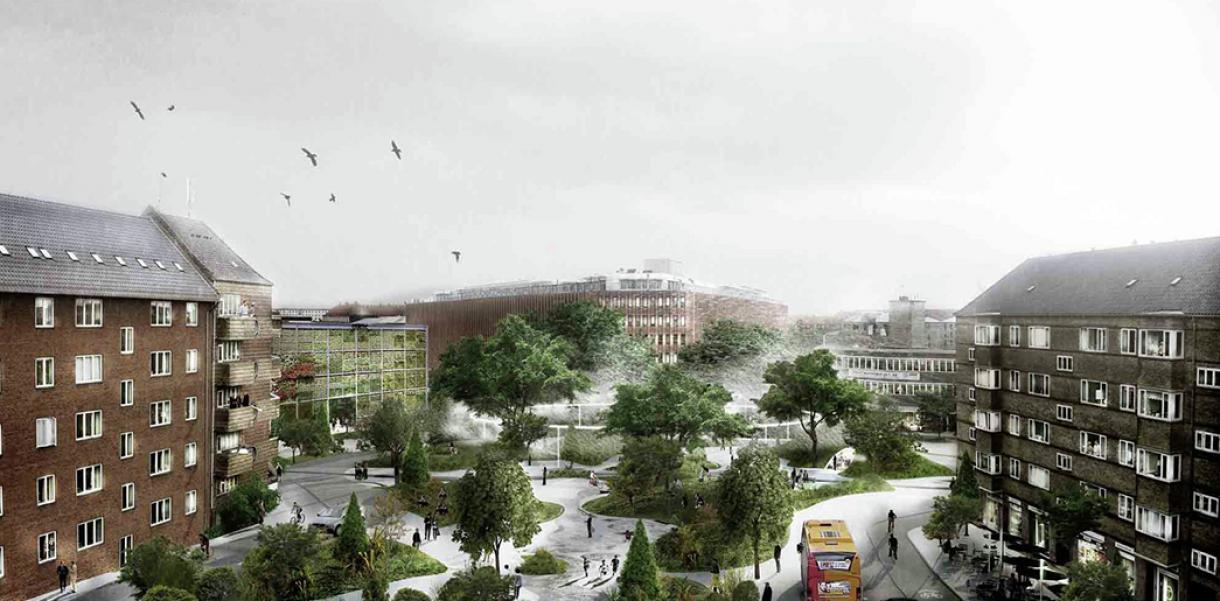In 2013, Copenhagen Municipality won an INDEX: Award in the Community category for the municipality’s ambitious take on handling flooding in the city and climate change in general – the Copenhagen Climate Adaption Plan.
What the INDEX: Award international jury emphasized as being particularly innovative and game-changing in the Municipality’s roadmap was 1) that the plan is tightly interlinked with Copenhagen’s other key plans for sustainable, social and economic development and 2) that the Municipality has turned things around so that the climate changes we are all faced with are not solely considered a burden to society but as a resource. A resource in forming new partnerships across sectors, creating new platforms for investments while implementing flexible design solutions that reduce construction work and saving money for the city.
That was five years ago. So, how are you Copenhagen? Still taking on challenges and pursuing your green, sustainable city visions?
In tackling climate change how we use and reuse – if we do – our natural resources is of tremendous importance.
In Denmark, the overall framework for handling all kinds of waste is developed by the National Environmental Protection Agency. Resource plans for how to handle waste locally work as concrete guidelines for how to meet the overall goal: to push a movement in Denmark from “consumption and combustion” to a society based on circular economy principles.
Denmark’s 98 municipalities are obliged to contribute to reaching the national goal, but the how and where is up to the municipalities to decide in order to secure most possible impact in a way that makes sense for the local community.
By the number of inhabitants, Copenhagen is by far the biggest municipality in Denmark. That obviously comes with a responsibility. Copenhagen Municipality is aiming high and has already announced a vision of becoming the world’s first CO2 neutral city in 2050, circular economy principles playing a crucial role.
Well, we now then have 32 years of speeding up things to look forward to, but Copenhagen has accepted the challenge.
Starting small one of the stepping stones towards achieving this very ambitious 2050 goal is to recycle min. 45% of all household waste in Copenhagen in 2018.
And if you ask the Copenhageners – ¾ are game. I’m one of them.
I live in Copenhagen with my family. Recently, I got a new set of wheels delivered to my front door. Plastic containers on wheels that is. For garbage. As sexy as it gets you might think. But in the last couple of weeks that grey gang of bins has actually, on a daily basis, made me proud of being part of a society where we at least make an effort to tackle the massive waste challenge we are facing globally – in a highly structured, user-centred and efficient way. They’re baby steps in a microcosmos setting. But this effort materialized in garbage containers delivered at my front door, or the recycle station just around the corner from my house, or the garbage truck regularly collecting “hazardous or odd sized waste” etc. on the street where I live, is the beginning of a change in (my) mindset.
I know all the right things about all the right things I should do right. I buy locally grown organic vegetables, cut back on meat, use my bike as transportation, turn the light off when I leave the room, keep my showers short, limit food waste and all the other good creative class candidate classics.
But I still feel a bit detached in the process, and I’m honestly not sure what kind of impact this kind of behaviour actually has.
Faced with a five-year-old-“why?”-question-machine, in the shape of my daughter, I’m pretty challenged visualizing and explaining why turning the light off when leaving the room is important. It quickly turns intangible and that equals lost interest and me resigning.
On the other hand, what can maintain interest is something you can touch, feel and smell that leaves another kind of space for reflection and dialogue.
Something as simple as cooking dinner becomes a micro-study in the diversity and different components in garbage and waste – that goes for her as well as for me.
And I like the ring to it when a still-in-kindergarten youngster when told to toss something replies with: “in which container?”
Challenge accepted.




